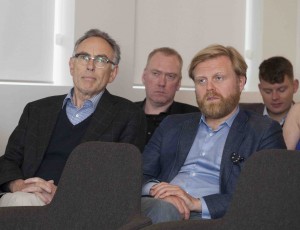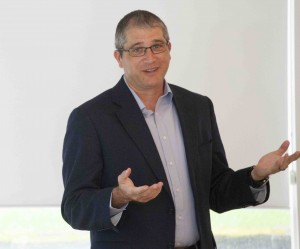The evidence gathered in comprehensive measurements of economic freedom in more than 150 economies of the world and also of the relationship between economic freedom on the one hand and living standards and general human well-being on the other hand, strongly supports Adam Smith’s theory: The wealth of nations is created by the division of labour and by free trade. People who are only pursuing their own interests, are led to work for the common good. This was the message of economics professor Robert Lawson, one of the authors of the index of economic freedom, at a well-attended meeting in Reykjavik Monday 28 July 2014, organised jointly by RNH and the Icelandic Taxpayers’ Alliance. The occasion of the meeting was that one hundred years have passed since the outbreak of the First World War on 28 July 1914, which almost led to the collapse of the order envisaged and explained by Adam Smith: global capitalism, a system of the division of labour and free trade. But while global capitalism was greatly weakened in two World Wars and in the Great Depression, it survived and emerged as strong as ever at the end of the 20th Century.

Guests included fmr. Finance Minister Fridrik Sophusson and economist Asgeir Jonsson. Photo: Thordur A. Thordarson.
Lawson explained the composition of the index of economic freedom and showed some of the results in telling graphs. The economies of the world can be divided into four parts or quartiles by the extent to which they are free. Then, living standards—as they are commonly defined, by GDP per capita—turn out to be, on average, best by far in the freest quartile. The same applies to the living standards of the bottom 10%, or the poor: their average income is highest by far in the freest economies of the world. Life expectancy and economic growth are also much greater in the freest part than in the other three quartiles. According to Lawson, both history and experience demonstrate that this is not a simple correlation, but a causal connection: When nations become free, affluence follows and because of that these nations can and will reduce all kinds of social problems resulting from scarcity. Lawson briefly discussed the worrisome trend in Iceland: While Iceland was the freest Nordic economy in 2004, it had by 2010 become the least free one. Lawson also pointed out that all data on the 2013 measurements of economic freedom in almost 150 economies in 2010 could be accessed at the website of the economic freedom project. Soon, the 2014 data on more than 150 economies in 2011 would be accessible on the website. Professor Lawson’s lecture formed a part of the joint project of RNH and AECR, the Alliance of European Conservatives and Reformists, on “Europe, Iceland and the Future of Capitalim”.



